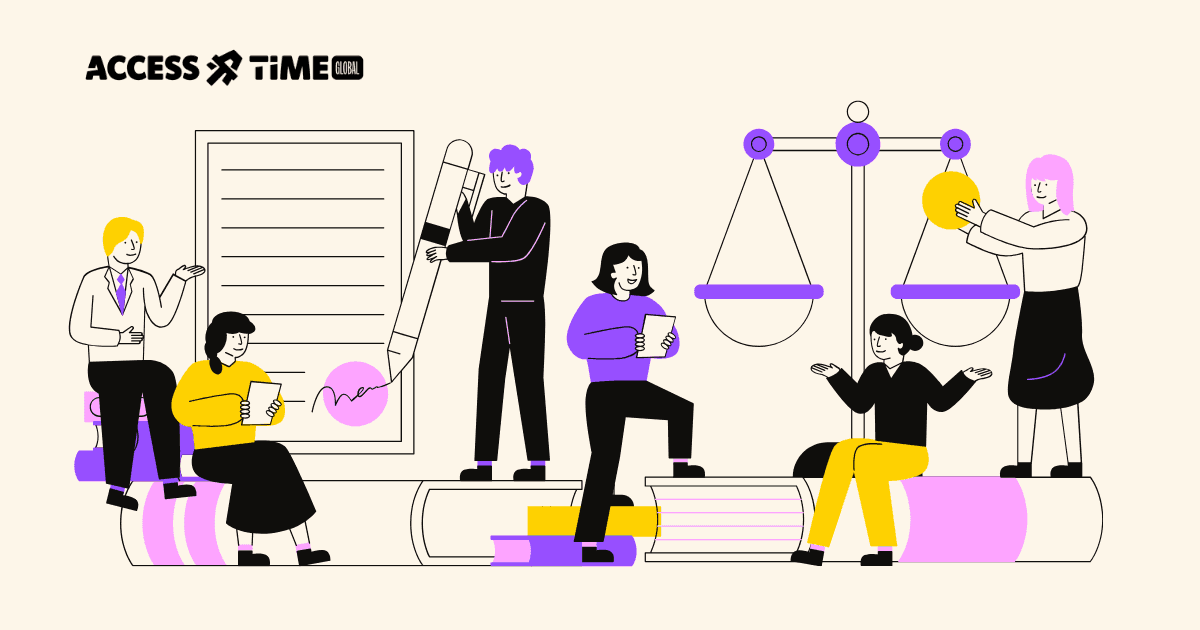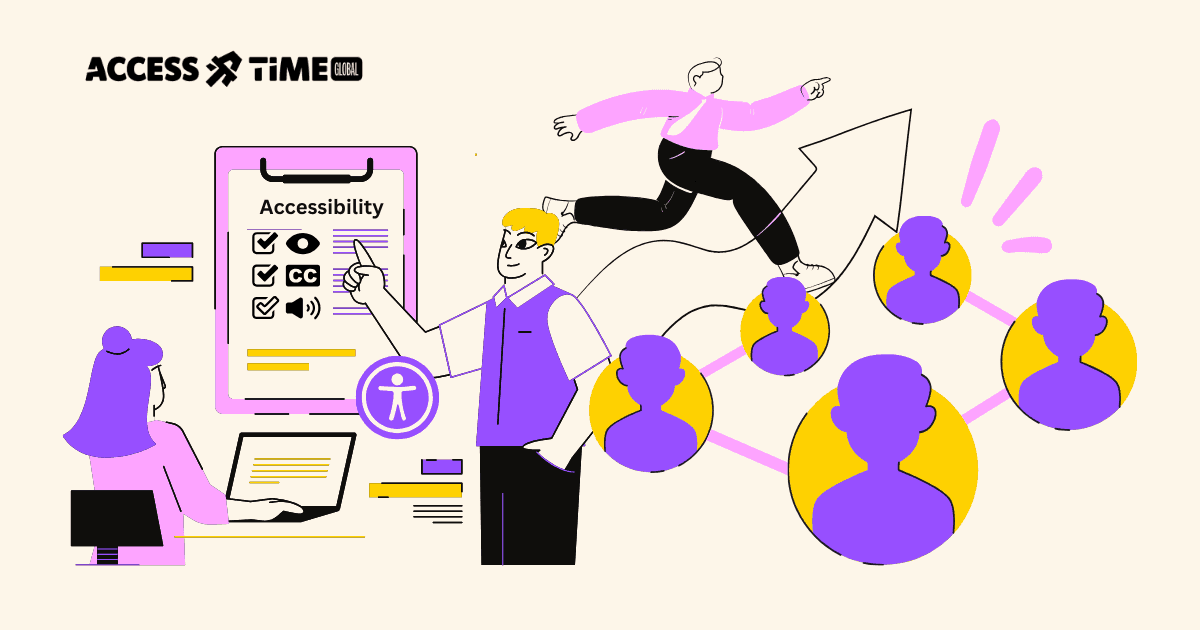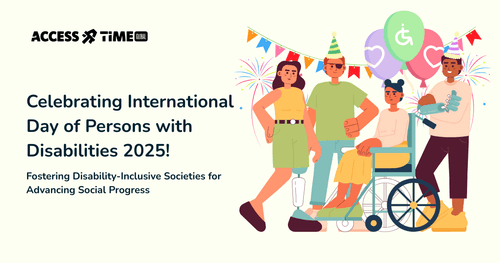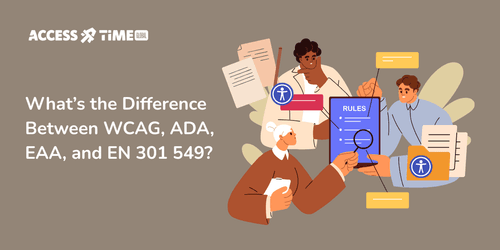How Inaccessible Products Put You at Legal Risk
Prasaja Mukti - Accessibility UX Writer
●●
Let’s start with a story that illustrates just how much the digital landscape has changed.
In 2019, a small pizza shop in Florida received a letter that challenged how they thought about their online presence. The owner who had run the family business for years was being sued, because the website wasn’t accessible to people with disabilities. The lawsuit wasn’t about massive damages. It was about something much more fundamental, the right to equal access.
That pizza shop owner likely never imagined that a simple website with a menu and contact info could bring legal trouble. But it did. And they're not alone. This is the new reality of digital business, your website isn’t just a marketing tool anymore. It’s part of your customer experience and you’re both morally and, in many cases, legally responsible for making it accessible. When it’s not, it introduces unnecessary barriers and yes, potential legal risk.
The Legal Landscape Has Shifted Dramatically
Accessibility lawsuits have increased by over 300% in recent years and it might surprise you. We're not talking about a small uptick or a temporary trend. We're talking about a fundamental shift in how courts view digital products and the responsibilities of those who build them.
The turning point came with a series of landmark cases that established a simple but powerful principle:
If your business serves the public, your digital services must be accessible to everyone, including people with disabilities.
Courts are now treating websites, mobile apps, and digital platforms like modern storefronts, and applying the same accessibility standards accordingly.
The Americans with Disabilities Act (ADA), passed in 1990, doesn’t explicitly mention websites. But U.S. courts have consistently interpreted it to include digital experiences as part of public accommodation. That means businesses of all sizes from solo entrepreneurs to large enterprises are expected to comply.
When Giants Set the Tone
Let's talk about some cases that sent shockwaves through the business world and established the legal precedent we're dealing with today.
Target Corporation (2006)
was one of the early wake-up calls. The National Federation of the Blind sued Target because their website wasn't compatible with screen readers, making it impossible for blind customers to shop online independently. Target initially fought the case, arguing that their physical stores were accessible and that should be enough. They lost. The settlement cost them $6 million, plus ongoing compliance monitoring and legal fees that stretched into the millions more.
Domino's Pizza (2019)
became the case that really got everyone's attention. A blind customer sued because he couldn't order pizza through their website or mobile app, even though he could technically call the store. Domino's fought all the way to the Supreme Court, arguing that there were no specific digital accessibility standards they were required to follow. They lost at every level. The case established that businesses can't hide behind the absence of specific technical standards, they're still responsible for ensuring equal access.
Netflix (2012)
faced a lawsuit over their lack of closed captions, which made their streaming content inaccessible to deaf and hard-of-hearing viewers. The settlement required them to caption all their content by 2014, fundamentally changing how streaming services think about accessibility. This case was particularly significant because it showed that even purely digital businesses weren't exempt from accessibility requirements.
But here's what really should get your attention: these weren't just isolated incidents targeting specific companies. These cases established legal precedents that apply to businesses of all sizes across all industries.
The Small Business Reality: You're Not Flying Under the Radar
Now, you might be thinking, "These are all big corporations with deep pockets. Surely small businesses don't need to worry about this, right?" Unfortunately, that's exactly the kind of thinking that's getting small business owners into serious legal trouble.
The truth is that accessibility lawsuits are increasingly targeting smaller businesses. Why? Because they're often easier targets with less sophisticated legal defenses, and because plaintiff attorneys have realized there's money to be made in going after the thousands of small businesses with inaccessible websites rather than fighting lengthy battles with corporate legal teams.
Kindly
, where individual franchise locations have faced separate lawsuits over website accessibility, even though they're small, locally-owned businesses. The courts didn't care about the size of the operation, they cared about equal access to services. Winn-Dixie, a regional grocery chain,
faced a lawsuit that's particularly instructive for small businesses
. A legally blind customer sued because their website's pharmacy refill feature wasn't accessible, forcing him to either call the pharmacy (often resulting in long wait times) or visit in person (requiring him to arrange transportation). The court ruled that this constituted discrimination and ordered Winn-Dixie to make their website fully accessible.
What About the European Market?
In Europe, the
European Accessibility Act (EAA)
is also reshaping expectations. It requires private sector digital products and services like e-commerce, banking, and transport apps to be accessible by 2025. But unlike the ADA, the EAA only applies to businesses above a certain size threshold, typically large enterprises with over 10 employees or significant revenue. This means smaller companies may not be immediately affected, but that doesn’t mean they’re off the hook in the long run. User expectations are shifting across the board.
But this isn’t just theoretical. Regulators have already started enforcing the European Accessibility Act ahead of the 2025 deadline.
- In Germany, consumer agencies fined a major financial services app nearly €50,000 for failing to provide accessible onboarding flows.
- In Spain, an e-commerce retailer faced penalties for overlooking accessibility documentation on its checkout process.
These cases send a clear message, while the EAA formally applies to larger businesses, mid-size digital providers are already under scrutiny. The real cost isn’t just the fines themselves, but the reputational hit that comes with being publicly flagged as inaccessible.
Why Size Doesn't Matter in Court
Here's the uncomfortable truth that many small business owners are discovering: when it comes to accessibility lawsuits, the size of your business is largely irrelevant. What matters is whether you're offering services to the public and whether those services are equally accessible to people with disabilities.
The legal principle is straightforward: if a person with a disability can't access your digital services in the same way that a person without disabilities can, that's potentially discrimination under the ADA. It doesn't matter if you're a Fortune 500 company or a local bakery with a simple website – the legal standard is the same.
Courts have consistently rejected arguments that small businesses should be exempt from accessibility requirements because of their size or resources. In case after case, judges have ruled that the inconvenience or cost to the business doesn't outweigh a person's civil right to equal access.
The Real Cost of Legal Action

Let's talk numbers, because the financial impact of accessibility lawsuits can be devastating for small businesses. Even if you ultimately win your case (which is increasingly unlikely), the legal costs alone can be crippling.
The average cost of defending an accessibility lawsuit ranges from $50,000 to $200,000
, and that's just for cases that settle relatively quickly. If your case goes to trial, costs can easily exceed $500,000. For many small businesses, that's enough to force closure.
Oh, don't forget about
reputation damage!
Accessibility lawsuits often attract media attention, especially in local markets. Being portrayed as a business that discriminates against people with disabilities can be devastating for customer relationships and community standing.
But the thing is...
Those extra costs don’t have to be part of your story.
The accessibility improvements, expert reviews, and ongoing testing that businesses often scramble to do after a lawsuit? You can do them now, on your own terms, for a fraction of the price (and with a much bigger upside!).
By starting with comprehensive accessibility improvements today, you can steer clear from legal trouble and creating a smoother, more inclusive experience that more people can actually use and love. And with the right partner (hi, that’s us), you’ll have the guidance, tools, and monitoring in place so accessibility isn’t a reactive chore.
The Patterns That Put You at Risk
After analyzing hundreds of accessibility lawsuits, certain patterns emerge that should concern any business owner. Understanding these patterns can help you assess your own risk level.
E-commerce functionality
is a major target. If your website allows people to make purchases, schedule appointments, or access services online, you're at higher risk. Courts consistently rule that these are essential business functions that must be equally accessible to everyone.
Industry targeting
is real. Restaurants, retail stores, healthcare providers, and professional services are frequently sued, often because they offer online services that are essential to daily life.
Website complexity
can increase risk. The more interactive features your site has like contact forms, online ordering, appointment scheduling, account portals, the more potential barriers exist for users with disabilities.
The Enforcement Trend That's Accelerating
What's particularly concerning for business owners is that accessibility lawsuit enforcement is accelerating, not slowing down. Several factors are driving this trend:
Legal precedent
is now firmly established. Early cases had to argue whether digital spaces were covered by the ADA. That debate is largely over, they are.
Plaintiff attorney specialization
has emerged. Law firms now specialize in accessibility cases, creating efficient processes for identifying targets and filing suits.
Detection tools
have improved. Automated scanning tools make it easier for attorneys to identify businesses with accessibility violations across entire industries or geographic regions.
Awareness campaigns
by disability rights organizations are encouraging more people with disabilities to assert their rights to digital access.
Beyond Compliance: The Business Case for Prevention

While avoiding lawsuits is crucial, it's worth noting that accessibility improvements often pay for themselves through increased usability and expanded market reach. When you make your digital products accessible, you're not just avoiding legal risk, you're potentially capturing customers you didn't even know you were losing.
But from a pure risk management perspective, the math is simple: proactive accessibility improvements cost significantly less than reactive legal defense. The businesses that are successfully avoiding lawsuits are the ones that addressed accessibility before they were forced to by the courts.
Taking Action: From Vulnerable to Protected
So how do you protect your business from accessibility lawsuits? The first step is understanding your current risk level, and that requires a comprehensive assessment of your digital properties.
Start with immediate risk assessment.
Access Lens
(beta) now offers a FREE automated accessibility audit that can quickly scan your website and identify the most common legal vulnerabilities. In just minutes, you'll get a clear picture of issues that could potentially expose you to lawsuits like missing alt text, keyboard navigation problems, color contrast violations, and other barriers that have been at the center of recent legal cases.
Think of this as a legal health check for your digital presence. Just like you wouldn't ignore a letter from the IRS hoping it would go away, you shouldn't ignore potential accessibility violations that could result in costly legal action.
But automated scanning only reveals surface-level issues.
To truly understand your legal exposure and develop a comprehensive protection strategy, you need expert analysis that considers the specific legal landscape in your industry and geographic area.
Ready to protect your business from legal risk?
Book a free consultation with one of our accessibility experts who specializes in legal compliance.
We'll conduct a thorough review of your digital properties through a legal risk lens, identifying not just what might be technically non-compliant, but what's most likely to attract legal attention based on current lawsuit trends.
During this consultation, you'll discover:
- Your specific legal vulnerabilities based on your industry, location, and business model
- Which accessibility issues pose the highest lawsuit risk and should be prioritized
- A realistic timeline and budget for achieving legal compliance
- Ongoing monitoring strategies to maintain protection as your business grows
- Documentation approaches that can help defend against potential claims
The sobering reality is this...
Accessibility lawsuits aren't slowing down, and hoping you won't be targeted isn't a business strategy. Every day you operate with accessibility barriers is another day of legal exposure that could threaten everything you've built.
Don't wait for a lawsuit to force your hand
. Start with the FREE Access Lens audit to understand your immediate vulnerabilities, then book your legal compliance consultation from us to develop a comprehensive protection strategy.
Your business, your employees, and your customers all depend on you making the right choice.
The question isn't whether accessibility lawsuits will continue (because they will). The question is whether you'll be ready when they come looking for their next target.
Protect what you've built. Your legal shield is just one consultation away.
Contact Us
Ready to explore how accessibility can transform your products? Visit our contact page to learn more about AccessTime consultancy services, or try Access Lens to get started with a fresh perspective on what's possible.
Share:

